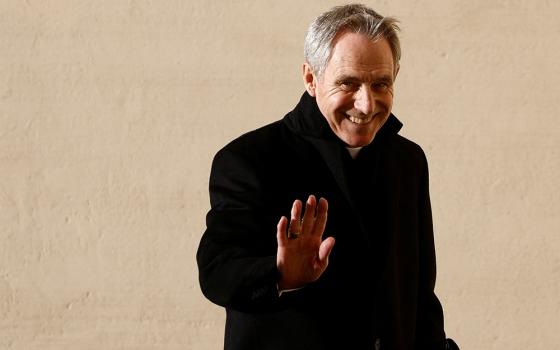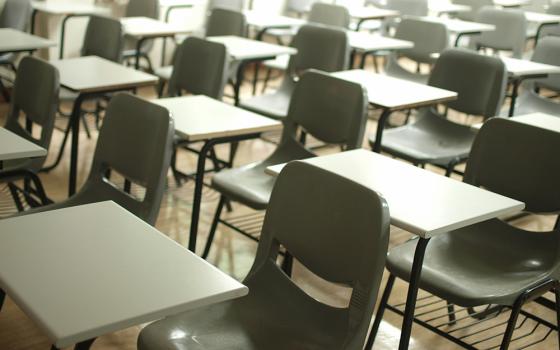In the 1960s, Bernard Bailyn was invited to edit some late colonial pamphlets for publication. Pamphlets were common in those days, the mid-eighteenth century equivalent of a blog: affordable, accessible and, most of all, explanatory. They permitted their authors to explain not only what they supported as the crisis with Great Britain unfolded, but why they supported it. And, in going over the pamphlets, Bailyn became fascinated by the sources of the arguments the Americans employed and cited. This was the genesis of his seminal work The Ideological Origins of the American Revolution, published in 1967.
The founding fathers were nothing if not literate. Bailyn notes the wide range of sources they invoked to make their arguments, first in opposition to imperial controls from London, then for independence, and finally for the kind of government they wished to erect. He notes that these late colonial authors almost invariably cited classical writers and thinkers, but sometimes in a superficial way, like window dressing. Plato and Pliny, Sophocles and Cicero, Aristotle and Tacitus, all made their way into the eighteenth century pamphlets. “The classics of the ancient world are everywhere in the literature of the Revolution,” Bailyn writes, “but they are everywhere illustrative, not determinative, of thought. They contributed a vivid vocabulary but not the logic or grammar of thought, a universally respected personification but not the source of political and social beliefs.”
Much the same could be said of the great Enlightenment figures of Europe. Voltaire, Rousseau, and more conservative voices like that of Montesquieu or Locke, all were cited in many pamphlets. “The citations are plentiful, but the knowledge they reflect, like that of the ancient classics is superficial,” Bailyn concludes. “Locke is cited often with precision on points of political theory, but at other times he is referred to in the most offhand way, as if he could be relied on to support anything the writers happened to be arguing. Bolingbroke and Hume are sometimes lumped together with radical reformers, and secondary figures like Burlamaqui are treated on a level with Locke.” The great English legal theorist Sir Edward Coke was frequently, but similarly, cited, an important but not a decisive voice. The political and social theories of covenant theology, associated with the early Puritan settlers, make a similar adornment in the literature.
Bailyn then gets to the heart of his thesis:
What brought these disparate strands of thought together, what dominated the colonists’ miscellaneous learning and shaped it into a coherent whole, was the influence of still another group of writers, a group who thought overlapped with that of those already mentioned but which was yet distinct in its essential characteristics and unique in its determinative power. The ultimate origins of this distinctive ideological strain lay in the radical social and political thought of the English Civil War and of the Commonwealth period; but its permanent form had been acquired at the turn of the seventeenth century and in the early eighteenth century, in the writings of a group of prolific opposition theorists, “country” politicians and publicists.
This “country whig” philosophy had begun with Milton and Harrington, and the most cited seventeenth century whig was Algernon Sidney, who had championed parliament’s cause during the English Civil War, gone into exile at the time of the restoration, returned to England to collect an inheritance, gotten involved again in politics, and was executed in 1683 for treason. But, as Bailyn makes clear, it was a later generation of political theorists, early eighteenth century writers like John Trenchard and Thomas Gordon and Bishop Benjamin Hoadly, men who had updated the radicalism of earlier times and applied it to their own, serving as “intellectual middlemen,” who were most frequently cited by the colonial Americans, and cited in ways that proved decisive for their arguments. The Independent Whig and Cato’s Letters were both re-published in the colonies, as were many of Hoadly’s tracts. Others, such as the Huguenot historian Paul de Raspin-Thoyras scanned the long arc of English history, seen through a whiggish lens, to produce both tracts and books; His tract “A Dissertation on the…Whigs and Tories,” was published in London in 1717 and reprinted in Boston in 1773. Note the dates.
The pamphlets of the American Revolution rely most heavily on these country whig thinkers for their coherence. Bailyn writes:
Their key concepts – natural rights, the contractual basis of society and government, the uniqueness of England’s liberty-preserving “mixed” constitution – were commonplaces of the liberal thought of the time. But if the elements of their thought were ordinary, the emphasis placed upon them and the use made of them were not. Pride in the liberty-preserving constitution of Britain was universal in the political literature of the age, and everyone agreed on the moral qualities necessary to preserve a free government. But where the mainstream purveyors of political thought spoke mainly with pride of the constitutional and political achievements of Georgian England, the opposition writers, no less proud of their heritage, viewed their circumstances with alarm, “stressed the danger to England’s ancient heritage and the loss of pristine virtue,” studied the processes of decay and dwelt endlessly on the evidences of corruption they saw about them and the dark future these malignant signs portended…Ignoring the complacence and general high level of satisfaction of the time, they called for vigilance against the government of Walpole equal to what their predecessors had shown against the Stuarts. They insisted, at a time when government was felt to be less oppressive than it had been for two hundred years, that it was necessarily – by its very nature – hostile to human liberty and happiness; that, properly, it existed only on the tolerance of the people whose needs it served; and that it could be, and reasonably should be, dismissed – overthrown – if it attempted to exceed its proper jurisdiction.
As Bailyn makes clear, these “country whigs” were deeply susceptible to conspiracy theories. They saw all contests of power, and after Hobbes, British and Americans were convinced that power was almost always an inimical force, in terms of the ability of power to rob people of their liberties. “What gave transcendent importance to the aggressiveness of power was the fact that its natural prey, its necessary victim, was liberty, or law, or right,” Bailyn observes. “The public world these writers saw was divided into distinct, contrasting, and innately antagonistic spheres: the sphere of power and the sphere of liberty or right.” Not much room for traditional Catholic teaching about the common good here.
Nor were these theorists immune to racialist thinking. “The ordinary people of England, they believed, were descended from simple sturdy Saxons who had known liberty in the very childhood of the race and who, through the centuries, had retained the desire to preserve it,” he writes. To them, the common law embodied that desire, and the Revolutionary crisis came on when Parliament was viewed as violating, rather than upholding, that desire for liberty. The events discussed yesterday in my treatment of Linda Colley’s Britons were understood as reinforcing the critical narrative of the country whigs who were almost entirely dissenting Protestants. (Even Bishop Hoadly might be classified as a dissenter seeing as he denied the possibility of sacerdotal powers and, as well, the entire idea of the Church visible.) The “country whigs” were, as Bailyn writes, “doctrinaire libertarians, disaffected politicians, and religious dissenters.”
Bailyn looks at how this worldview shaped the on-going development of thought among the colonials, leading them to believe that a break with the corrupt mother country was the only way to preserve their liberties. He examines other experiences, such as the de facto self-government that many colonies had long enjoyed, the way the imperial crisis developed, and how this all transformed the original “country whig” ideas and, in turn, transformed the project the Americans were about. Rare is the book published almost fifty years ago that retains its pride of place in such a lively field as the history of the American Revolution, but that is Bailyn’s signature achievement.
I do not know how anyone who has read Bailyn’s book, and it is to the historiography of the American Revolution what Bach’s b minor Mass is to music, could seriously sustain the thesis that “the founders built better than they knew.” For starters, they knew exactly what they were doing. Secondly, this line is invoked to reconcile the founding with Catholic ideas about politics, governance and the common good. These radical libertarians, who went far beyond Locke in their understanding of the right to “appeal to heaven” against a legitimate government, were the forbears of today’s libertarians, conspiratorial, suspicious, eternally hostile to government. The libertarian heresy was there at the beginning, so let no one call it un-American. But, it was wrong then and it is wrong now.




